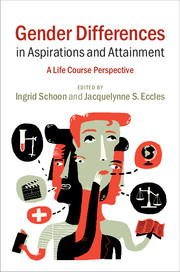Book contents
- Frontmatter
- Contents
- List of Figures
- List of Tables
- Notes on Contributors
- List of Abbreviations (selected)
- Part I Introduction
- Part II The early school years
- Part III Career planning during adolescence
- 5 What should I do with my life?
- 6 Gendered happiness gap?
- 7 Uncertainty in educational and career aspirations
- 8 The challenges facing young women in apprenticeships
- Part IV Choosing a science career
- Part V Longer-term consequences of early experiences
- Part VI The role of context
- Index
- References
5 - What should I do with my life?
Motivational, personal, and contextual factors in mastering the transition of graduating from high school
Published online by Cambridge University Press: 05 October 2014
- Frontmatter
- Contents
- List of Figures
- List of Tables
- Notes on Contributors
- List of Abbreviations (selected)
- Part I Introduction
- Part II The early school years
- Part III Career planning during adolescence
- 5 What should I do with my life?
- 6 Gendered happiness gap?
- 7 Uncertainty in educational and career aspirations
- 8 The challenges facing young women in apprenticeships
- Part IV Choosing a science career
- Part V Longer-term consequences of early experiences
- Part VI The role of context
- Index
- References
Summary
Abstract
The transition from high school to college, an apprenticeship, or the workforce is very demanding for adolescents. In this chapter, we explore the factors that contribute to successfully adapting to the many demands of this transition. Building on findings from developmental, social, and vocational psychology, we explore the role of three types of factors for mastering this transition: (1) motivational factors (goal selection and pursuit), (2) personal attributes and attitudes (personality and gender-related attitudes), and (3) context variables (parent modeling). Regarding motivational factors, we build on the model of selection, optimization, and compensation (SOC) and investigate the importance of the selection, pursuit, and maintenance of goals for adapting to the transition. As for personal attributes and attitudes, we argue that traditional gender-related attitudes, although less influential for educational choices, can help to buffer the insecurities adolescents face during this period. Finally, turning to contextual factors, we discuss the influence of parental work participation in different phases of the family life cycle on adolescents’ planning of their future career- and family-related lives.
- Type
- Chapter
- Information
- Gender Differences in Aspirations and AttainmentA Life Course Perspective, pp. 125 - 145Publisher: Cambridge University PressPrint publication year: 2014
References
- 1
- Cited by

